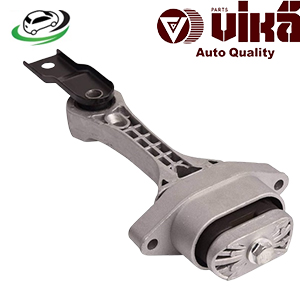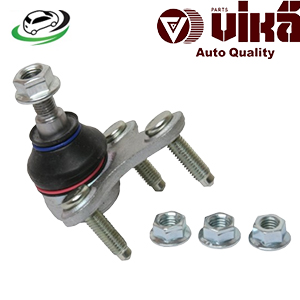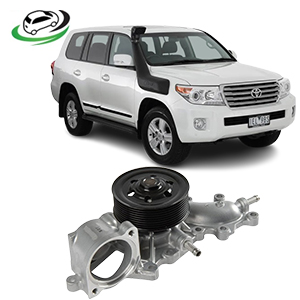-10%
Get Toyota Landcruiser 200 Series 1VD-FTV Genuine Water Pump 16100-59366 in Kenya
The water pump is one of the most essential components in a vehicle’s cooling system, responsible for circulating coolant through the engine and radiator to regulate engine temperature. It ensures that the engine doesn’t overheat during operation, which is critical for maintaining engine performance and longevity. In this detailed explanation, we will cover the water pump’s functions, importance, construction, maintenance, and common issues.
Functions of the Water Pump
- Coolant Circulation: The primary function of the water pump is to circulate coolant through the engine block, cylinder heads, and radiator. It moves the coolant through channels in the engine where it absorbs heat generated by combustion, then pushes the heated coolant to the radiator, where it is cooled before recirculating back into the engine.
- Regulation of Engine Temperature: The water pump plays a crucial role in maintaining optimal engine temperature. Internal combustion engines generate immense heat, and without effective cooling, components would overheat and suffer damage. The water pump ensures that coolant continuously flows through the engine, removing excess heat and keeping the engine within its ideal operating temperature range (typically between 195 and 220 degrees Fahrenheit).
- Facilitating Heat Transfer: The water pump enables heat transfer by circulating coolant to the radiator, where it exchanges heat with the air outside. This continuous process of absorbing heat from the engine and releasing it into the air is essential for keeping the engine cool, even under heavy loads or during prolonged operation.
- Prevention of Hot Spots: The water pump also prevents the formation of “hot spots” within the engine. Without effective circulation, certain areas of the engine block or cylinder heads could overheat while others remain cooler, leading to warping, cracking, or damage to gaskets and seals. The water pump ensures an even distribution of coolant, promoting uniform temperature regulation.
- Pressure Regulation: While primarily responsible for circulation, the water pump also contributes to maintaining proper coolant pressure within the cooling system. The correct pressure is crucial to prevent coolant from boiling at high temperatures, ensuring that the system works efficiently.
Construction of the Water Pump
The water pump is typically made up of several components, each playing a role in its ability to circulate coolant efficiently:
- Pump Housing: The pump housing is generally made of aluminum, cast iron, or steel. It encloses all the internal components of the water pump and is bolted to the engine. The housing is designed to direct coolant flow through the pump and into the engine’s cooling channels.
- Impeller: The impeller is one of the most important components of the water pump. It is a disc with blades that spins rapidly to create a suction force, drawing coolant from the radiator and pushing it through the engine block and cylinder heads. The impeller’s design, typically made from steel, plastic, or composite materials, ensures efficient coolant flow.
- Shaft and Bearings: The impeller is mounted on a shaft that connects it to the engine’s crankshaft via a drive belt (or timing belt/chain in some designs). Bearings on the shaft allow it to spin smoothly and quietly. These bearings are critical to the longevity of the water pump, as they support the impeller’s rotation.
- Pulley: The pulley is connected to the engine’s drive belt system and is responsible for transmitting power to the water pump. When the engine is running, the drive belt spins the pulley, which, in turn, rotates the shaft and impeller, creating coolant flow.
- Seal: The water pump seal prevents coolant from leaking out of the pump housing while allowing the shaft to rotate freely. The seal is designed to handle extreme temperatures and pressures, but it is also a common point of failure in worn water pumps.
Importance of the Water Pump
- Engine Longevity: The water pump is critical to preventing engine overheating, which can lead to catastrophic engine damage. Without proper cooling, components like the head gasket, cylinder heads, and pistons could warp, crack, or seize due to excessive heat. A functioning water pump ensures that the engine operates at a safe temperature, preserving its longevity.
- Prevention of Overheating: Overheating can result in major damage, including warped cylinder heads, cracked engine blocks, and blown head gaskets. The water pump prevents these issues by continuously circulating coolant, dissipating heat, and maintaining a stable engine temperature.
- Fuel Efficiency and Performance: An engine that operates at its optimal temperature is more fuel-efficient and performs better. If the engine gets too hot, it may trigger safety protocols like reducing power output, leading to diminished performance. The water pump keeps the temperature in check, ensuring the engine runs efficiently.
- Protection of Cooling System Components: The water pump also protects other cooling system components, such as the radiator, hoses, thermostat, and heater core, by ensuring that coolant flows properly through the entire system. Without sufficient coolant flow, these components could become clogged, overheat, or fail.
Maintenance of the Water Pump
- Regular Inspection: It’s important to inspect the water pump during routine vehicle maintenance. Look for signs of leaks, unusual noises (like grinding or whining), and corrosion around the pump housing. Inspect the drive belt connected to the water pump pulley for wear, cracks, or fraying.
- Coolant Flushes: Regular coolant flushes are essential for maintaining a healthy water pump. Old or contaminated coolant can corrode the pump’s metal components, damage seals, and reduce the pump’s efficiency. Most manufacturers recommend flushing the cooling system every 30,000 to 50,000 miles or as specified in the vehicle’s service manual.
- Check for Leaks: The water pump is a common source of coolant leaks, particularly when the pump’s seals begin to wear out. If you notice coolant pooling under the vehicle or a drop in coolant levels, have the pump checked for leaks. Catching a small leak early can prevent more severe damage.
- Replace When Necessary: Water pumps are designed to last between 60,000 and 100,000 miles, depending on the vehicle and driving conditions. However, they can wear out prematurely, especially if the cooling system has been neglected. If the water pump begins to fail, replace it promptly to avoid overheating.
- Drive Belt Inspection: The drive belt connected to the water pump should be inspected regularly. A worn or loose belt can reduce the pump’s efficiency or cause it to stop working entirely. If the belt is worn or damaged, it should be replaced to ensure the water pump functions correctly.
Common Issues with Water Pumps
- Coolant Leaks: A leaking water pump is one of the most common issues. Over time, the seals in the pump can wear out, allowing coolant to leak from the pump housing. A leak can lead to low coolant levels, which may cause the engine to overheat.
- Noisy Operation: A worn or failing water pump may produce grinding, whining, or squeaking noises. This noise is often caused by worn bearings inside the pump or a loose drive belt. Noisy operation is a sign that the pump needs attention and may soon fail.
- Overheating: If the water pump fails or loses efficiency, the engine may begin to overheat. An overheating engine can lead to serious damage, including warped cylinder heads and blown head gaskets. If you notice the engine temperature gauge rising above normal, the water pump may need to be inspected or replaced.
- Corrosion: Over time, coolant that isn’t regularly flushed can become acidic and corrode the water pump’s metal components. Corrosion can damage the pump housing, impeller, and seals, leading to leaks and pump failure.
- Impeller Wear: In some cases, the impeller inside the water pump can become worn or damaged. This is more common in pumps with plastic impellers, which can crack or break apart over time. A worn impeller reduces the pump’s ability to circulate coolant, leading to overheating.
- Drive Belt Issues: A slipping or broken drive belt can prevent the water pump from functioning correctly. If the belt is loose, it may cause the pump to spin too slowly, reducing coolant circulation. A broken belt will stop the pump from working entirely, leading to rapid engine overheating.
Conclusion
The water pump is a vital component of a vehicle’s cooling system, responsible for circulating coolant through the engine and preventing overheating. Its role in maintaining optimal engine temperature ensures engine performance, fuel efficiency, and longevity. Regular maintenance, such as coolant flushes and inspections, is essential to keep the water pump in good condition and avoid costly repairs. By understanding the importance of the water pump and recognizing the signs of failure, vehicle owners can take proactive steps to ensure their engine stays cool and operates efficiently for years to come.
Follow us on Facebook for more parts.




Reviews
Clear filtersThere are no reviews yet.